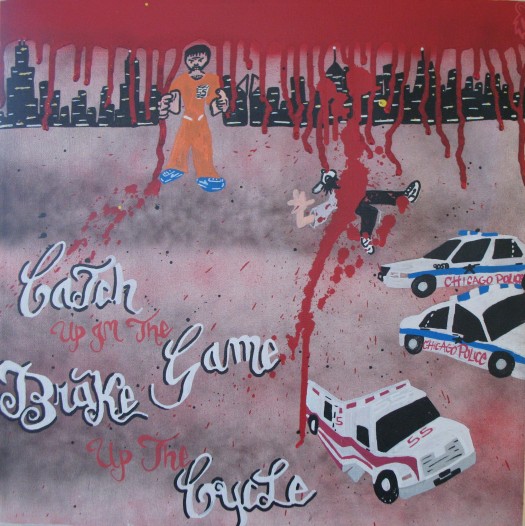#NoSchoolPushout: Police in Schools
Police officers play a critical role in feeding the school to prison pipeline and many of them seem to recognize this fact. A school police officers’ union in California created an uproar a few years ago by designing and selling t-shirts depicting a young boy behind prison bars with the words: “U Raise Em, We Cage Em.” The local community was rightly incensed by this; yet it should not have come as a surprise that cops see their role in schools as arresting and incarcerating young people.
As Erica Meiners and I point out in an article published in Jacobin this year:
“Criminalizing student behavior is not new. The concept of the “school resource officer” emerged in the 1950s in Flint, Mich., as part of a strategy to embed police officers in community contexts. In 1975, only 1% of US schools reported having police officers. As of 2009, New York City schools employed over 5,000 school safety agents and 191 armed police officers, effectively making the school district the fifth largest police district in the country.”
We can be fooled into believing that schools with metal detectors, surveillance cameras, and police officers feel safe to students, teachers, and staff. However, data from the Consortium on Chicago School Research (CCSR) suggests something different:
“it is the quality of relationships between staff and students and between staff and parents that most strongly defines safe schools. Indeed, disadvantaged schools with high-quality relationships actually feel safer than advantaged schools with low-quality relationships.”[3]
In addition, the presence of police officers in our schools often has negative ramifications for students. A national study by the Justice Policy Institute titled “Education Under Arrest (PDF)” makes a convincing case that:
“…when schools have law enforcement on site, students are more likely to get arrested by police instead of having discipline handled by school officials. This leads to more kids being funneled into the juvenile justice system, which is both expensive and associated with a host of negative impacts on youth.”[4]
Even with these findings however, many students feel ambivalent about the role of police in their schools. Students are not immune to having the cops in their heads too. Colorlines produced a video last year where they asked LA students whether police officers in schools made them feel safe. There were a variety of student responses.
In discussions about the school-to-prison pipeline, we need concrete examples of how the process works. As such, it is important to understand the role that police and security staff play in our schools. Unfortunately in many districts reports about police involvement in schools have not been and are not readily available to the public.
If interested in learning more about police in schools, here’s list of resources that I compiled last year.

